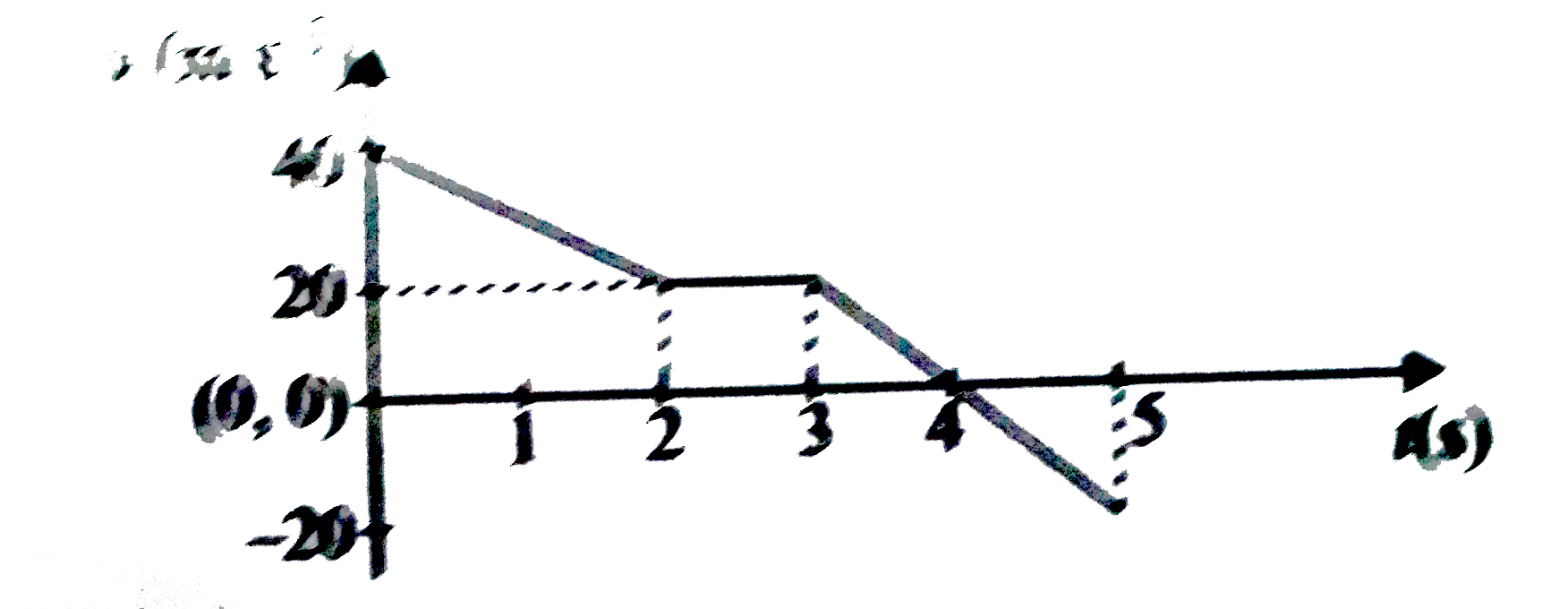An object that is dropped freely from rest travels for 5 seconds.What is the distance travelled in the last 2 seconds of its journey.
To solve the problem of finding the distance traveled by an object in the last 2 seconds of its journey after being dropped freely from rest for 5 seconds, we can follow these steps:
Step 1: Understand the initial conditions
The object is dropped from rest, which means:
- Initial velocity (u) = 0 m/s
- Acceleration (a) = g = 10 m/s² (assuming standard gravity)
Step 2: Calculate the final velocity after 5 seconds
Using the equation of motion:
v=u+at
Substituting the values:
v=0+(10m/s2)×(5s)
v=50m/s
So, the final velocity after 5 seconds is 50 m/s.
Step 3: Calculate the velocity at 3 seconds
To find the distance traveled in the last 2 seconds, we first need to find the velocity at 3 seconds (which will be the initial velocity for the last 2 seconds).
Using the same equation of motion:
v′=u+at
Substituting the values:
v′=0+(10m/s2)×(3s)
v′=30m/s
So, the velocity at 3 seconds is 30 m/s.
Step 4: Calculate the distance traveled in the last 2 seconds
Now, we can use the kinematic equation to find the distance (s) traveled in the last 2 seconds:
v2=v′2+2as
Where:
- v = final velocity after 5 seconds = 50 m/s
- v′ = initial velocity for the last 2 seconds = 30 m/s
- a = g = 10 m/s²
Rearranging the equation to solve for s:
s=v2−v′22a
Substituting the values:
s=(50m/s)2−(30m/s)22×(10m/s2)
s=2500−90020
s=160020
s=80m
Final Answer
The distance traveled in the last 2 seconds of its journey is 80 meters.
---
The object is dropped from rest, which means:
- Initial velocity (u) = 0 m/s
- Acceleration (a) = g = 10 m/s² (assuming standard gravity)
Using the equation of motion:
v=u+at
Substituting the values:
v=0+(10m/s2)×(5s)
v=50m/s
So, the final velocity after 5 seconds is 50 m/s.
To find the distance traveled in the last 2 seconds, we first need to find the velocity at 3 seconds (which will be the initial velocity for the last 2 seconds).
Using the same equation of motion:
v′=u+at
Substituting the values:
v′=0+(10m/s2)×(3s)
v′=30m/s
So, the velocity at 3 seconds is 30 m/s.
Now, we can use the kinematic equation to find the distance (s) traveled in the last 2 seconds:
v2=v′2+2as
Where:
- v = final velocity after 5 seconds = 50 m/s
- v′ = initial velocity for the last 2 seconds = 30 m/s
- a = g = 10 m/s²
s=v2−v′22a
Substituting the values:
s=(50m/s)2−(30m/s)22×(10m/s2)
s=2500−90020
s=160020
s=80m
The distance traveled in the last 2 seconds of its journey is 80 meters.
Topper's Solved these Questions
- BOOK - AAKASH SERIESCHAPTER - MOTION IN A STRAIGHT LINE EXERCISE - Numerical exercise(LEVEL-2)29videos
MOTION IN A STRAIGHT LINE
- BOOK - AAKASH SERIESCHAPTER - MOTION IN A STRAIGHT LINE EXERCISE - Question for descriptiv Answers7videos
MOTION IN A STRAIGHT LINE
- BOOK - AAKASH SERIESCHAPTER - MOTION IN A STRAIGHT LINE EXERCISE - problems47videos
MOTION IN A STRAIGHT LINE
- BOOK - AAKASH SERIESCHAPTER - MOTION IN A PLANEEXERCISE - QUESTION FOR DESCRIPTIVE ANSWER7videos
MOTION IN A PLANE
- BOOK - AAKASH SERIESCHAPTER - MOVING CHARGES AND MAGNETISMEXERCISE - EXERCISE-III49videos
MOVING CHARGES AND MAGNETISM
Similar Questions
Knowledge Check
- Question 1 - Select One
In the given v-t graph the distance travelled by the body in 5 seconds will be
 A100 mB80 mC40 mD20 m
A100 mB80 mC40 mD20 m
A freely falling body traveled xm in nth second distance travelled in n−1th second is
View SolutionA ball is dropped from the top of a tower of height (h). It covers a distance of h/2 in the last second of its motion. How long does the ball remain in air?
View SolutionA ball is dropped downwards . After 1 second another ball is dropped downwards from the same point . What is the distance between them after 3 seconds .
View SolutionA ball falls freely from rest. The ratio of the distance travelled in first, second, third and fourth second is
View SolutionIf wavelength is equal to the distance travelled by the electron in one second then
View SolutionIf a freely falling body covers half of its total distance in the last second of its journey, Find its time of fall.
View SolutionA ball is dropped from the roof of a tower height h. The total distance covered by it in the last second of its motion is equal to the distance covered by it in first three seconds. The value of h in metre is (g=10m/s2)
View Solution

